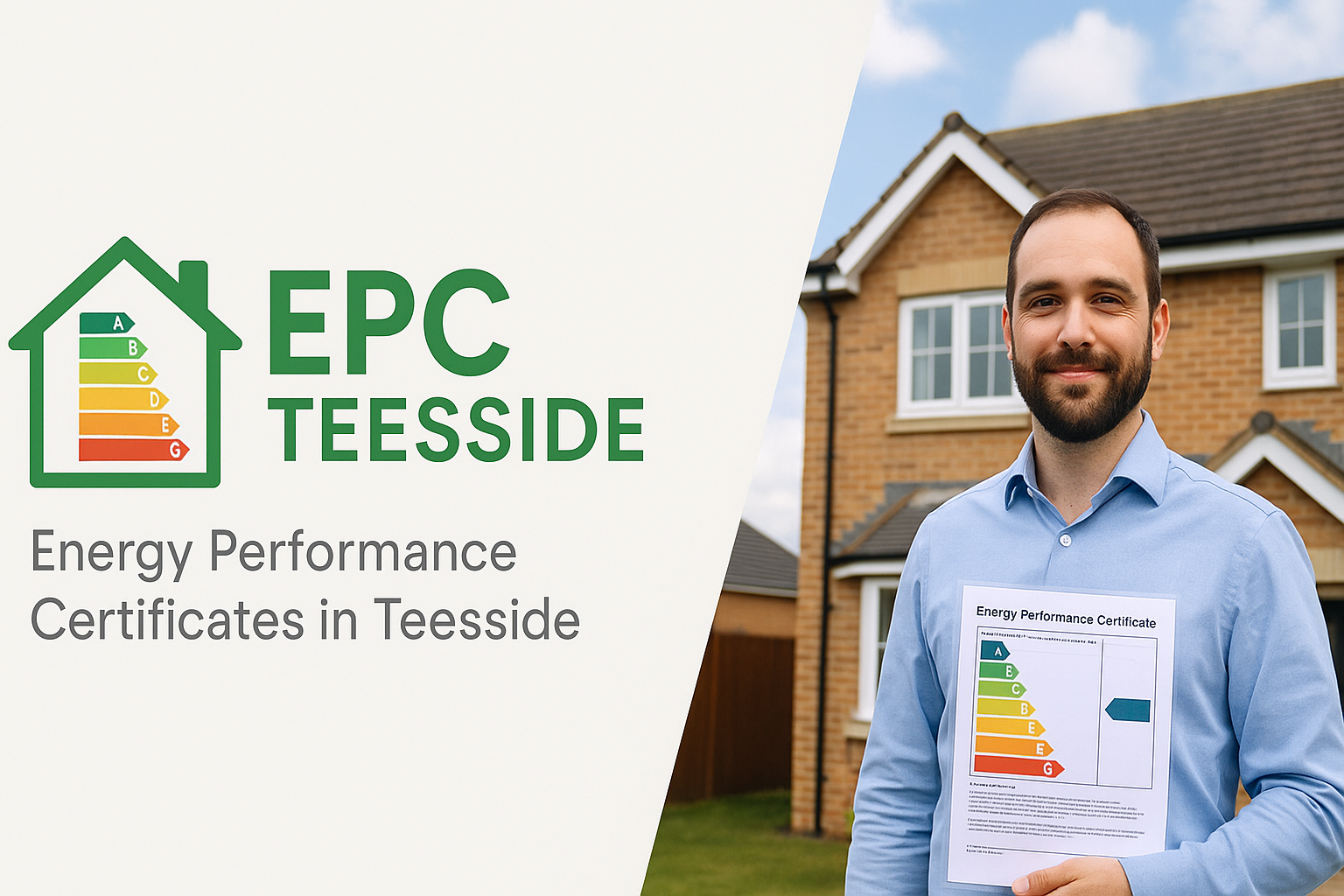What an EPC Assessor Does During a Home Visit
When you book an Energy Performance Certificate (EPC) with EPC Teesside, one of our qualified Domestic Energy Assessors (DEAs) will visit your property to carry out an inspection.
This assessment is essential for accurately determining your home’s energy efficiency rating, which appears on your EPC.
Many customers wonder what happens during the visit — so here’s a clear explanation of what an EPC assessor actually does, how long it takes, and what information is collected.
The Purpose of the EPC Assessment
The main goal of the assessment is to understand how your property uses and retains energy.
An EPC assessor gathers information about your home’s construction, heating, insulation, and lighting, then enters it into government-approved software that calculates your property’s energy rating (A–G).
This rating helps identify ways to make your home more energy efficient, reduce bills, and cut carbon emissions.
What to Expect on the Day
Your assessor will arrive at the agreed appointment time with ID and equipment, ready to complete a non-invasive inspection — meaning there’s no drilling, testing, or disruption to your property.
Most domestic EPC assessments take around 30–60 minutes, depending on property size and complexity.
You don’t need to prepare anything special — just make sure the assessor can easily access:
- All rooms (including the loft if safe and accessible)
- The boiler and heating controls
- The hot water cylinder (if present)
- Windows and doors
What the Assessor Looks At
The EPC assessor collects data about the property’s fabric, heating, insulation, and lighting systems.
Here’s a breakdown of what’s inspected during the visit:
1. Building Construction
- Wall type (solid, cavity, timber frame, etc.)
- Roof type (pitched, flat, insulated, or uninsulated)
- Floor type (solid, suspended, or mixed)
- Property age and build quality (used to estimate typical insulation levels)
2. Insulation
- Loft insulation thickness (usually checked visually via loft hatch)
- Wall insulation (cavity fill, external, or internal lining)
- Floor insulation (if visible, such as under suspended floors or through documentation)
3. Windows and Doors
- Type of glazing (single, double, or triple)
- Frame material (uPVC, timber, metal)
- Draught-proofing and condition of seals
4. Heating Systems
- Main heating source (gas boiler, electric heaters, heat pump, etc.)
- Boiler type, make, model, and efficiency
- Heating controls (room thermostat, programmer, thermostatic radiator valves)
- Secondary heating (such as a log burner or electric fire)
5. Hot Water System
- Hot water cylinder or combi system
- Cylinder insulation jacket (if fitted)
- Immersion heaters or alternative systems (e.g. solar thermal)
6. Lighting
- Number of fixed light fittings
- Proportion using low-energy bulbs (LED or CFL)
7. Renewable Technologies
- Solar PV or solar thermal panels
- Air or ground source heat pumps
- Micro wind turbines (if applicable)
8. Ventilation and Draughts
- Extractor fans and trickle vents
- Open chimneys or flues
All of this information helps build a clear picture of how efficiently your property uses energy.
Photographic Evidence
During the visit, the assessor will take supporting photographs as required by government guidelines.
These are used only to verify the data recorded — they’re not shared publicly.
Typical photos include:
- The front and rear of the property
- The boiler and manufacturer’s label
- The heating controls
- Loft insulation
- Window glazing
- Lighting examples
All photos are stored securely and used solely for EPC validation purposes.
After the Visit
Once the on-site inspection is complete, the assessor enters the data into official EPC software approved by the Government.
This software calculates:
- The property’s Energy Efficiency Rating (A–G)
- The Environmental Impact (CO₂ emissions)
- Estimated annual running costs
- A list of recommended improvements
Your completed certificate is then lodged on the national EPC Register and emailed directly to you — typically within 24 hours of your assessment.
What You’ll Receive
Your Energy Performance Certificate includes:
- Current and potential energy ratings
- Environmental impact rating
- Estimated annual energy costs
- Improvement recommendations (with estimated savings)
- Unique EPC reference number (RRN)
- Assessor and accreditation details
This certificate remains valid for 10 years and can be reused when selling or renting your property.
What the Assessor Doesn’t Do
It’s important to note:
- No drilling, damage, or testing is carried out
- No electrical or plumbing systems are dismantled
- Furniture and flooring aren’t moved
- You don’t need to provide utility bills (unless you want to show upgrades)
The process is non-intrusive, quick, and respectful of your home.
Why Choose EPC Teesside
At EPC Teesside, all our assessments are conducted by qualified, accredited, and insured Domestic Energy Assessors.
We pride ourselves on:
✅ Professionalism – always polite, punctual, and respectful
✅ Accuracy – using the latest government-approved software
✅ Speed – certificates delivered within 24 hours
✅ Transparency – fixed pricing, no hidden costs
✅ Local expertise – based in Teesside and familiar with local property types
Book Your EPC Assessment
If you’re ready to book your EPC or want to learn more about the process, we’re here to help.
📞 Phone: 0751 813 5361
📧 Email: johnpaulhood2015@gmail.com
We proudly serve Middlesbrough, Stockton-on-Tees, Redcar, Hartlepool, Darlington, and surrounding Teesside areas.
EPC Teesside — Professional, Friendly, and Always Local.

